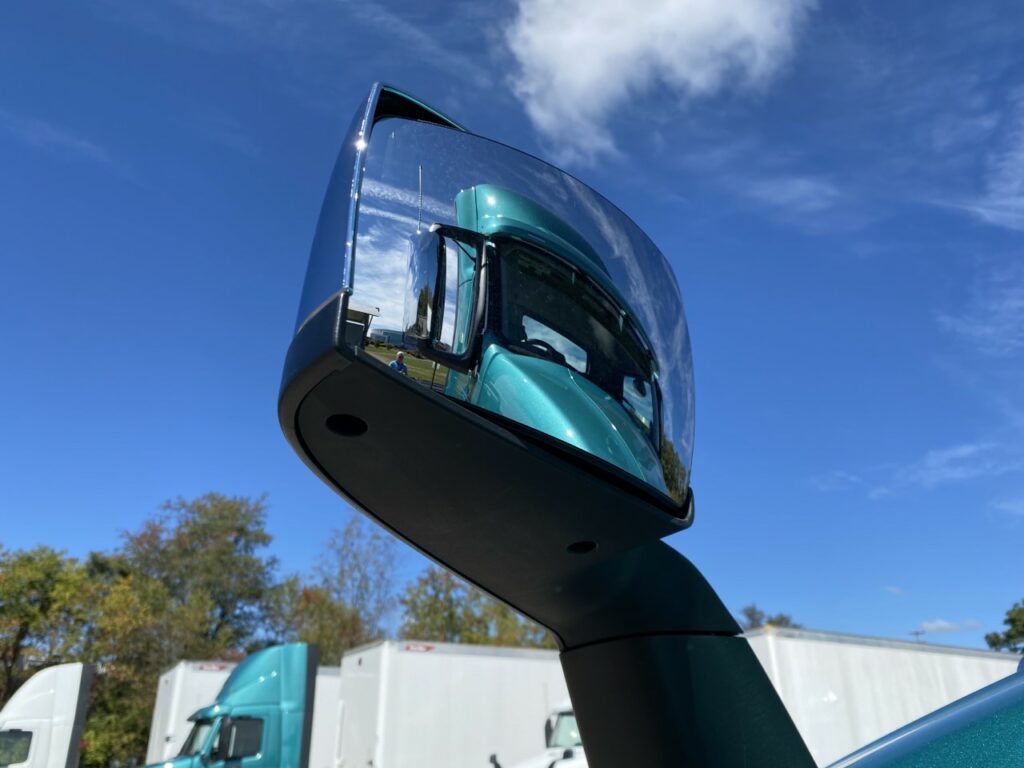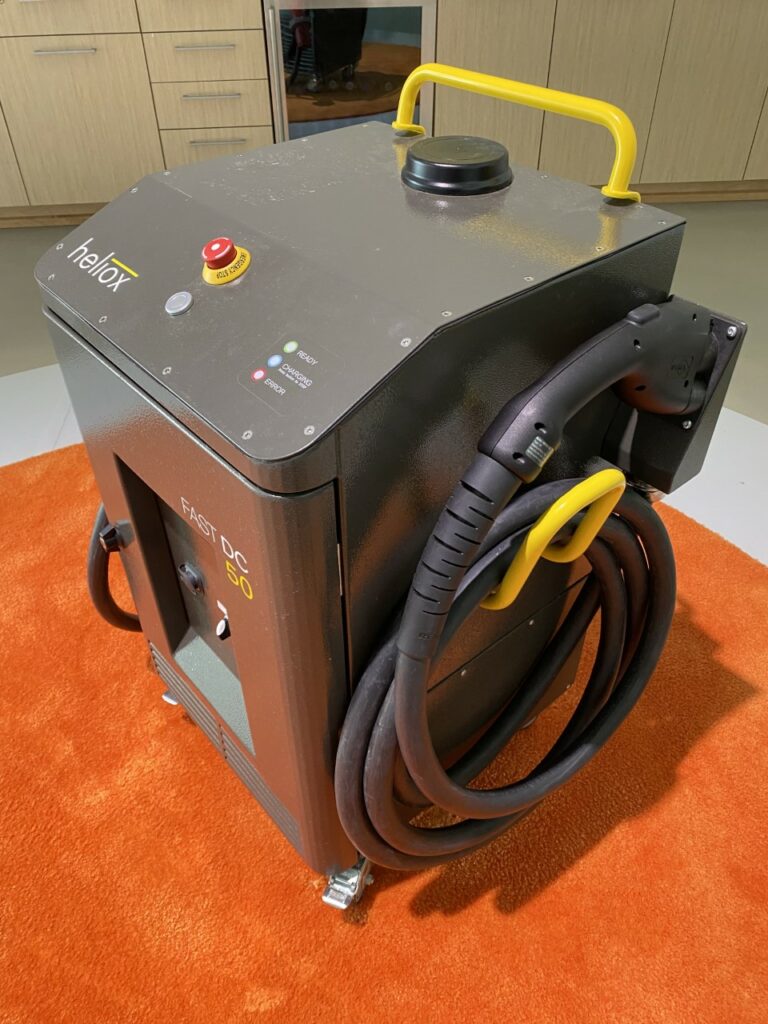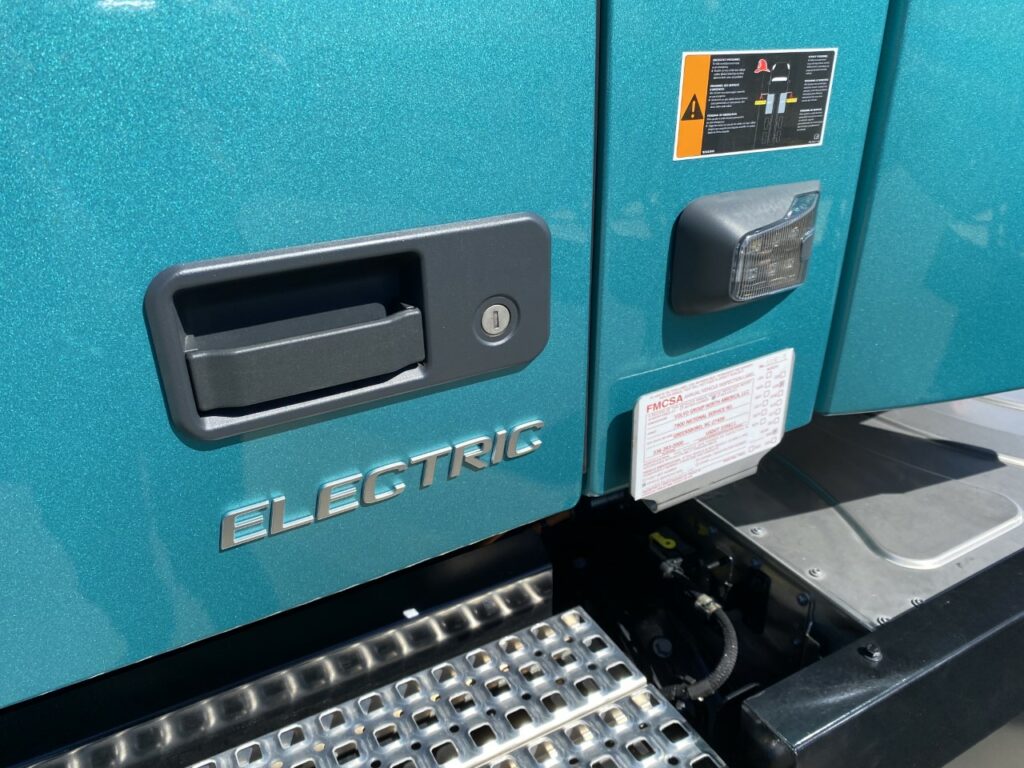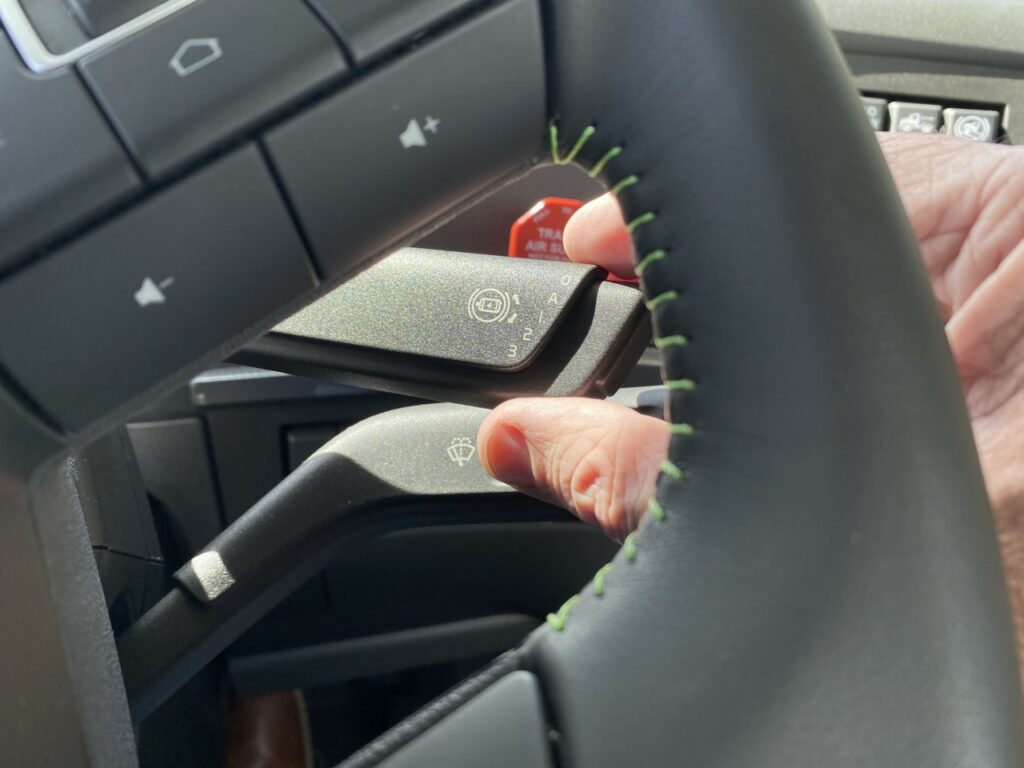Volvo supporting electric trucks as an ecosystem
Finding a battery-electric truck is one thing. Understanding where it will fit, the maintenance demands, financing options, and charging infrastructure is understandably more complex.
Volvo Trucks North America is looking to support fleets throughout the entire journey, combining everything from consulting services to simplified monthly payments.
Peter Voorhoeve, the OEM’s president, refers to it as a “completely consultative approach”.

Fleets and dealers from across North America converged on the Volvo Trucks Customer Center in Virginia this week to better understand what the support would actually look like.
There is clearly interest in such vehicles. Volvo’s order intake for electric trucks is now measured in the hundreds, Voorhoeve said. “We’re talking about really big orders right now.”
The support infrastructure continues to grow as well, with evermore dealers certified to sell and maintain the electric vehicles. Three of those are now established in Canada – including Pare Centre Du Camion in Quebec, Camions Volvo Montreal in Dorval, and Expressway Trucks in Waterloo, Ont. More are in the works.
“Stay tuned,” Voorhoeve said. “We’ll soon have new news in Canada.”
Connected solutions
Maximum battery-electric truck ranges were initially as low as 150 miles (240 km), and they have now expanded to 275 miles (440 km) depending on the battery configurations. But even there, fleets need to consider factors as diverse as topography, loads and charger locations.
Volvo ensures all the relevant issues are addressed through comprehensive route simulations, which cover such things as route distance, duration, driving time, service and rest time, maximum payloads, average speeds, and top speeds.
“We can simulate everything,” said Alexis Clemons, electromobility manager for national accounts, noting her team has run more than 300 of the simulations so far.
Many of the measures will be foreign to those who have so far focused exclusively on diesel-powered equipment. With battery-powered equipment, Volvo also needs to consider the total energy consumed for the route, average kilowatt-hours consumed, remaining energy in terms of kilowatt-hours and the battery’s remaining state of charge. Assumptions about the benefits of regenerative braking are based on automatic settings – which will be somewhat conservative compared to what drivers can achieve when toggling through three available settings.
“We can simulate everything.”
– Alexis Clemons, electromobility manager for national accounts
Ambient temperatures play a role as well. As temperatures drop, after all, drivers will switch on cab heaters that place their own draws on available power.
Some routes and fleets have been disqualified, Clemons admitted. Operating ranges tend to be the main issue in such cases, but speeds, payloads and topography have played roles too.
“The route may not make sense the way it’s run now,” she said. But the analysis can also consider where opportunity charging could make a truck work.
In other cases, Volvo has even been able to identify ways individual trucks can use fewer batteries and smaller chargers, potentially lowering acquisition costs.
“Most of the time I can see our trucks being able to fulfill the routes with about a 75-kW charger, which is significantly less expensive than a 250,” she said. (Admittedly, most fleets are opting for larger chargers to prepare for future trucks.)
Once trucks are on the road, Volvo continues to provide real-time monitoring by pulling data through traditional telematics gateways. If the battery charge drops below 20%, for example, a yellow warning icon is generated for those watching over the trucks. That still leaves a buffer until the 5% threshold where vehicle power is downgraded.
Beyond the state of charge, Volvo also remains focused on the battery’s state of health, recommending charging practices and other steps to maximize the power source’s life.

Charging support
The charging remains one of the biggest challenges, since there is no broad charging network in place.
One of the first examples of a public charging network is coming in the form of a corridor in central California, which Volvo is building with partners including Shell, dealers, Affinity, Western and TEC Equipment. Each site will be equipped with two 180-kW, DCFC CCS1 chargers and be open to any trucks with CCS1 connectors. They’ll also be located close enough together to support the range of first-generation VNR Electric trucks.
Most of the charging, though, continues to be supported through fleet facilities, and there are plenty of questions to answer there.
“It’s a complicated part of the puzzle,” said Manuel Aguirre, of Volvo Energy’s EV charging and infrastructure solutions team. But Volvo is offering guidance based on its own experience – including the steps to establish charging stations at certified dealerships.
The OEM has identified a list of approved chargers to deliver the all-important energy – negotiating prices and even stock levels to reduce lead times that might otherwise last a year or more — as well as government incentives to help offset the costs, engineering and construction partners, and maintenance services.
Not every charger will meet the needs.
“If the plug fits it should charge, but we have found out that not always is the case,” said charging solutions product manager Dan Freeze. Challenges have included everything from voltage mismatches to software issues. “One size does not fit all.”
The accepted CCS1 chargers include 480-volt and three-phase inputs, a charger DC output voltage of at least 750 volts, support for the OCPP v1.6 communication protocol, and up to 250 kW of truck charging capacity, bringing trucks to an 80% state of charge within 90 minutes.
The unit itself is just part of the equation, of course. Some fleet facilities will require significant upgrades before any widespread rollout.
“If the plug fits it should charge, but we have found out that is not always the case.”
– Dan Freeze, charging solutions product manager
“We’ve heard from customers who don’t even have three-phase power in their facility,” Freeze said. And that will add to the costs.
“Most finance companies will, at the most, finance the charger,” Aguirre noted. But Volvo is rolling it all together into a single monthly fee to cover infrastructure, design and construction, hardware and software, equipment maintenance, and manage carbon credits. Anyone who buys or leases a VNR Electric can receive the support, whether it’s to finance the charger alone, or a broader need.
So, too, is Volvo helping fleets better understand the costs. And that calculation involves more than the price per kilowatt-hour set by a utility company, he said. There are also costs for the structure, software, installation and construction, charger uptime, and AC/DC conversion losses. Then those are offset through region-specific government incentives and utility rebates.
Every decision about the charger will play a direct role in how electric trucks will be run.
A DC fast charging station can deliver 75 to 250 kW or more, fully charging a commercial vehicle in two to seven hours. Slow chargers that deliver up to 50 kW might take six to 12 hours. But take the truck to a public charging station and a 150 kW charger or unit delivering a megawatt or more might take an hour to top off a battery.
Public charging to support heavy-duty trucks doesn’t exist today, and light-duty charging stations won’t work for heavy-duty trucks at scale, Aguirre warned. “Heavy-duty is a different animal from light-duty.”

Payment options
It all comes at a cost, but Volvo is offering a buffer through a suite of financing and service options.
Existing roadblocks include equipment costs, collateral value, charging infrastructure, incentives, and insurance needs, noted Alex Ruelas, electromobility solutions manager with Volvo Financial Services. “Who knows how much these vehicles will be worth in three, four five years from now?”
VFS Electromobility solutions will offer support in the form of an open-ended TRAC lease with no mileage or turn-in conditions, or a closed-end Fair Market Value Lease with mileage and turn-in conditions.
Such support is particularly important given that other financial institutions may be unwilling to cover some of the related costs.
“Financial institutions they are low risk takers. If they don’t know, they don’t know,” Ruelas said, noting how they might shy away from financing assets when there’s no known residual value. “We’re seeing a lot more interest in the FMV model. This is the walkaway model.”
It means Volvo has made assumptions about how the values will depreciate, but he wouldn’t reveal how that depreciation compares to diesel-powered equipment.

Maintenance needs
Beyond that, a new Gold service bundle creates a true vehicle as a service option – with a single monthly payment that covers every maintenance need and comes with a battery performance guarantee. When used, it can also be bundled with the financing for charging infrastructure and even insurance needs, although the latter option is currently available only in the U.S.
The OEM will advance up to 80% of the cost of a charging station, and support infrastructure installations with terms of up to 60 months. And if battery health dips below 80%, the power supply could be replaced or refurbished.
But this is about more than electric components alone.
The gold maintenance package covers the entire truck, with the exception of tires and glass, and includes scheduled and preventive maintenance. Even towing. Parts and labor prices are locked in at the time a deal is made, unlike full-service leasing costs that can be adjusted in the face of things like rising parts costs during a vehicle’s service life. The support even resumes after fleets address a collision-related repair.
It all comes with a five- and six-year option for up to 350,000 miles (560,000 km). In contrast, a standard warranty would cover lithium-ion batteries, and electric control systems and powertrains, for three years, 250,000 miles (400,000 km), and 300,000 kWh. The five-year Gold program is good for up to 500,000 kWh, and the six year is up to 600,000 kWh.
“We’re really using this as a tool to mitigate risks for our customers, to really get them over the hump,” said Mike Furst, director – service contracts.
Electric vehicles could very well reduce some maintenance needs. “I’m hoping we’re going to see less wear and tear on the shocks with the vibration being less,” Furst said. “In terms of wear, we’re a little early in to make a call on brakes, for example. We’re hopeful.”
“We have the opportunity of a lifetime,” he added, referring to the benefits of battery-electric trucks. “We can definitely make a difference in the world.”
Have your say
This is a moderated forum. Comments will no longer be published unless they are accompanied by a first and last name and a verifiable email address. (Today's Trucking will not publish or share the email address.) Profane language and content deemed to be libelous, racist, or threatening in nature will not be published under any circumstances.